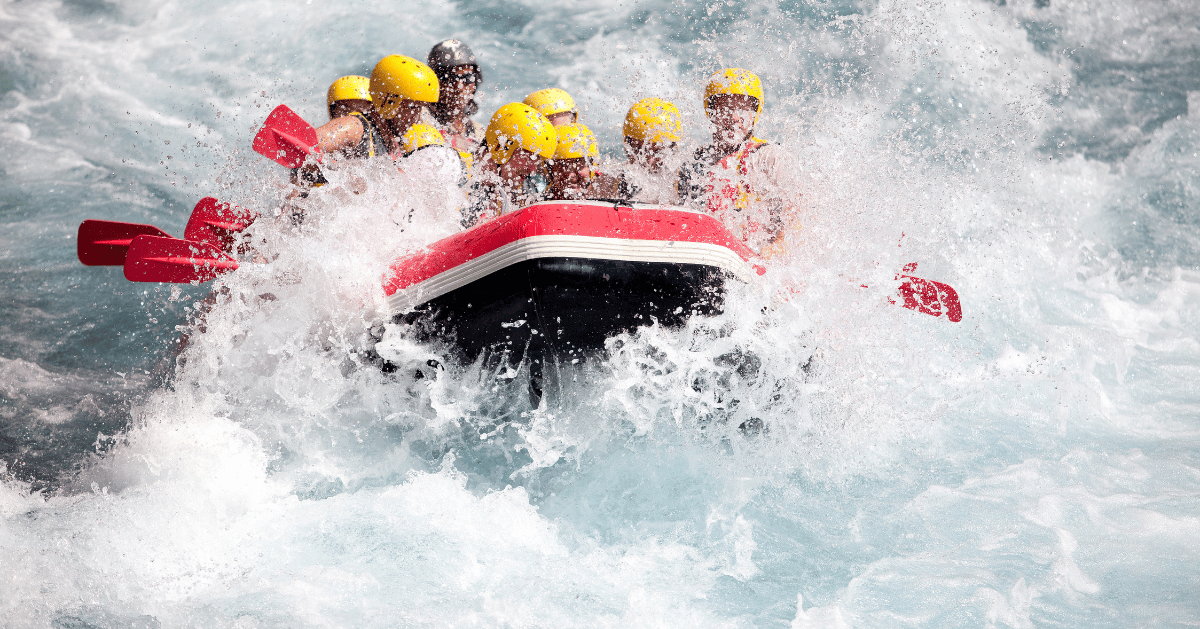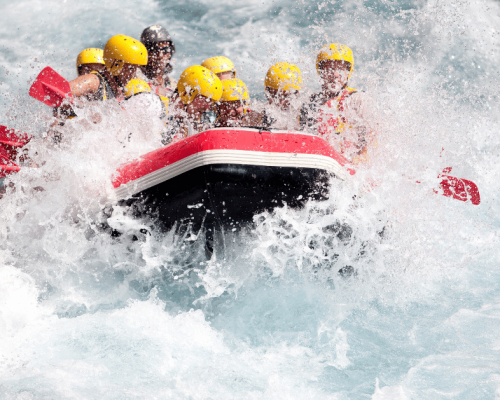White water rafting might seem risky to some, but it’s really just an exciting adventure that gets your heart racing. Safety is always the top priority for those organizing these trips. Skilled guides, who know the rivers inside and out, are there to ensure everything goes smoothly.
Let’s talk about the safety gear and precautions rafting companies take. You’ll get high-quality equipment, including sturdy life jackets and well-maintained rafts. Before you hit the water, there’s a detailed safety briefing. The guides will walk you through how to handle the rapids with confidence.
In this post, we’ll cover the potential risks of white water rafting and share tips to stay safe. Get ready for an exciting ride!
Read Also: Can You Fly a Drone in the Rain?
Table of Contents
ToggleEssential Safety Gear for White Water Rafting
White water rafting is thrilling, but staying safe is the priority. We want to clear up some myths and give you straightforward tips on how to stay safe on the water.
Before diving into the fun, it’s important to pick the right safety gear. Here’s what you’ll need:
- Wear quick-drying clothes, like a long-sleeve shirt, over your wetsuit or drysuit to protect against the sun, wind, or cold. Avoid cotton—it stays wet and can make you colder.
- Use water shoes or sturdy sandals for grip and foot protection. Flip flops can easily fall off.
- A solid helmet is a must to protect your head from rocks and waves.
- Make sure your life jacket (PFD) fits well and meets safety standards.
- Gloves aren’t always needed, but they help with grip and keep your hands from getting cut or cold.
- Apply sunscreen and insect repellent to avoid sunburn and bug bites.
Gear can change depending on where you’re rafting and the water conditions, so always ask your rafting company for advice. The right equipment makes your trip fun and safe!
Top 5 Safety Tips for White Water Rafting
White water rafting is a thrilling activity that needs careful attention and preparation. Here are five key safety tips for a safe rafting journey:

1.Getting to Know Your River for Rafting
Knowing your river is key to a great rafting trip. Each river has its own character, with calm parts and wild rapids. Before you go, learn about the river. Look at its map, find out where the rapids are, and spot any dangers. This helps you stay safe and enjoy the adventure more.
Weather also affects the river a lot. A quiet river can become tough after heavy rain. So, it’s important to know how the river changes with different weather.
Finally, think about your and your group’s rafting skills. Every river has easy and hard parts. Choose a river that matches your skills for a fun and safe trip. Understanding the river, how weather changes it, and your own skills are important for a memorable rafting experience.
2.The Impact of Weather on Your Rafting Experience
Weather greatly influences your rafting experience. It’s like an artist changing the river’s landscape. Heavy rain can turn a calm river into a series of tough rapids. The water gets faster and more unpredictable, and you might face new challenges like debris or stronger currents.
Then there’s the dry weather. It can lower the water level, revealing rocks and creating narrow paths that weren’t there before.
Cold weather adds another layer to consider. Rafting in cold water, especially from melting snow, means you need the right gear. The cold is refreshing but can be dangerous. You have to watch out for hypothermia, which can sneak up on you.
Knowing the weather before your rafting trip is important. It’s not just about the day itself but how the weather before that day has changed the river. This helps you get ready, whether you need extra warm gear or to mentally prepare for more challenging conditions.
3.Stay in the Boat: Maintaining Balance and Safety
Staying in the boat during a white water rafting trip is a skill that goes beyond simply holding on. It’s about understanding and responding to the raft’s movements, maintaining your balance, and working in harmony with the rest of your team. The challenge lies in reacting to the river’s unpredictable nature while keeping yourself and your team safe.
When you’re in the raft, every wave and turn requires a coordinated effort. It’s about finding your center of gravity and adjusting your position as the water changes around you. This isn’t just a physical skill; it involves a keen sense of awareness of your surroundings and the behavior of the river. You learn to read the water, anticipate the raft’s reactions, and adjust your balance accordingly.
A key part of staying in the boat is also understanding how your actions affect its stability. Your movements, especially in response to rapids, need to be in sync with the rest of your team. When everyone moves together, following the rhythm of the raft and the river, it creates a balance that helps keep the raft steady and upright.
4.What to Do If You Fall Out of the Raft
If you fall out of the raft, it’s important to know how to react. Don’t try to stand up or swim against the current. Instead, lie on your back with your feet pointing downstream. This way, your feet can hit any obstacles first, not your head.Keep your feet up to avoid getting them caught on anything. Stay calm and breathe steadily. Panicking can make things worse.
In strong currents, don’t rush to swim back to the raft. Float with your feet first until the water is calmer or you can safely swim to shore or back to the raft. This way of handling falling out helps you work with the river, not against it. It’s key to rafting safely.
5.Swimming Skills in White Water Rafting
Being a good swimmer is helpful in white water rafting, but it’s not just about swimming well. It’s about knowing how to handle yourself in moving water. Rivers can be tricky, with strong currents and sudden changes.
Good swimmers understand water better. They know how to move, save energy, and stay calm. This is really useful if you fall out of the raft. But remember, even the best swimmers need a life jacket. It keeps you floating and safe, especially in rough water. In short, swimming skills are important, but they’re just one part of staying safe in white water rafting. Always wear a life jacket, listen to your guides, and respect the power of the river.
Conclusion
Wrapping up, white water rafting offers a thrilling blend of adventure and nature untouched beauty. Yet, the true excitement comes from enjoying it safely. It’s essential to know the river well, be ready for any weather, and understand what to do if you find yourself in the water unexpectedly.
Rafting isn’t just about tackling the rapids; it’s a team effort that demands respect for the river and readiness for what’s ahead. By sticking to the safety advice we’ve talked about, you can relish the thrill of the rapids without taking unnecessary risks.
No matter if you are new to rafting or have lots of experience, treat the river with care and prudence. Every rafting trip is a chance to learn something new and have a great time. Stay safe, be prepared, and let the river lead you on a memorable journey.










